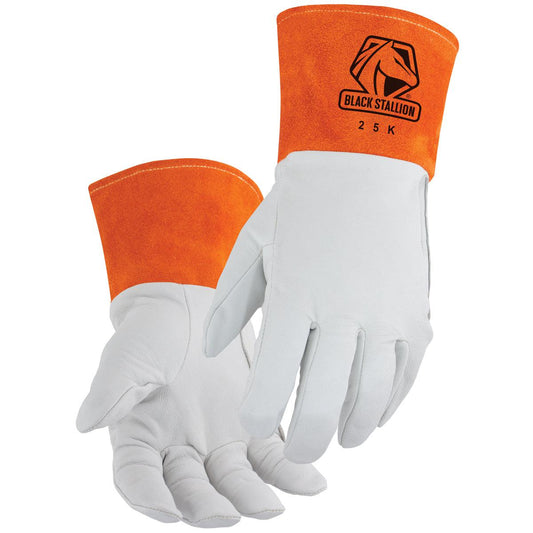TIG welding with the pulse feature is most often done for thin metals such as aluminum and can also be used with copper and varieties of steel. Pulsing can be set up with a foot pedal or as a setting on your TIG welder, but when should you use pulsing? There are some very specific applications for pulsing with a TIG welder and then there are times when it can just come in handy to get a job done better. Here’s a look at some TIG welding with pulse applications:

Greater Control Over the Heat
Pulse for TIG is all about improving your control when you don’t want to burn through your metal work piece. Using the pedal or setting up the pulse will moderate the heat as you weld and ensure you have enough heat present at the joint without laying a ton of filler metal into the joint or burning through the metal.
Too much metal in the weld joint could create a headache for your welding project, as you’ll have to stop to grind it down and then clean up the metal before you can start welding again. The pulse setting gives you far more control over the welding process without compromising the strength and integrity of your weld.
When You Need a Neat Weld
Pulsing your weld is an easy way to create a smooth, clean weld for a TIG welding application. Getting yourself in a steady pulsing rhythm is an ideal way to keep moving the puddle forward or walking the cup along a weld joint
TIG welding is most often used when there is little margin for error and the metal is especially thin. By pulsing along the weld joint you can moderate the amount of filler metal you add so that it’s evenly distributed and you create a great looking weld.
Minimal Movement
If you’re in a tight spot and you don’t have a lot of room to maneuver, pulsing your TIG welder is one way to glide along the weld joint, adding filler metal as you go, without worrying about introducing too much heat and filler. The main thing for this application will be a steady hand on the torch and an even pace for the filler metal.
If this is a particularly tight spot, you can pick up shorter torches that have a very small head and can fit in a variety of spaces. With TIG welding you can reach a tight spot much better than with a stick welder and you can control the input of filler metal better than with MIG, making it a great option when welding is particularly challenging.
Moving Faster with High Speed Pulse
Given some practice, many welders can effectively weld at the high speed of 150 pulses per second, creating neat welds in far less time. While you wouldn’t want to try a faster pulsing speed if you’re not used to it, many welders prefer to move either really slow or really fast in order to create a steady rhythm. Pulsing at around 20 per second has led some welders to make uneven, spotty welds.
This would be especially useful in a fabrication shop where you’re seeing a lot of the same metal work pieces over and over and over again. If you have a handle on how fast you need to move on each piece, then there’s a good chance you can bump up the pulsing rate to improve your welding speed.
Welding Along an Edge or a Hole
If you need to make a quick clean weld without ruining an edge or filling a hole with filler metal, pulsing is another great way to give yourself extra control and accuracy in a difficult welding position. The heat could build up and start to melt the metal if you don’t have a good steady pulse going while you TIG weld.


